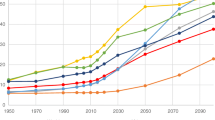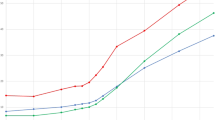Abstract
Summary
Fracture Liaison Services are the best model to prevent secondary fractures. The International Osteoporosis Foundation developed a Best Practice Framework to provide a quality benchmark. After a year of implementation, we confirmed that a single framework with set criteria is able to benchmark services across healthcare systems worldwide.
Introduction
Despite evidence for the clinical effectiveness of secondary fracture prevention, translation in the real-world setting remains disappointing. Where implemented, a wide variety of service models are used to deliver effective secondary fracture prevention. To support use of effective models of care across the globe, the International Osteoporosis Foundation’s Capture the Fracture® programme developed a Best Practice Framework (BPF) tool of criteria and standards to provide a quality benchmark. We now report findings after the first 12 months of implementation.
Methods
A questionnaire for the BPF was created and made available to institutions on the Capture the Fracture website. Responses from institutions were used to assign gold, silver, bronze or black (insufficient) level of achievements mapped across five domains. Through an interactive process with the institution, a final score was determined and published on the Capture the Fracture website Fracture Liaison Service (FLS) map.
Results
Sixty hospitals across six continents submitted their questionnaires. The hospitals served populations from 20,000 to 15 million and were a mix of private and publicly funded. Each FLS managed 146 to 6200 fragility fracture patients per year with a total of 55,160 patients across all sites. Overall, 27 hospitals scored gold, 23 silver and 10 bronze. The pathway for the hip fracture patients had the highest proportion of gold grading while vertebral fracture the lowest.
Conclusion
In the first 12 months, we have successfully tested the BPF tool in a range of health settings across the globe. Initial findings confirm a significant heterogeneity in service provision and highlight the importance of a global approach to ensure high quality secondary fracture prevention services.


Similar content being viewed by others
References
Johnell O, Kanis JA (2006) An estimate of the worldwide prevalence and disability associated with osteoporotic fractures. Osteoporos Int 17(12):1726–1733
Hernlund E (2013) Osteoporosis in the European Union: medical management, epidemiology and economic burden. A report prepared in collaboration with the International Osteoporosis Foundation (IOF) and the European Federation of Pharmaceutical Industry Associations (EFPIA). Arch Osteoporos 8(1–2):136
Cummings SR, Melton LJ (2002) Epidemiology and outcomes of osteoporotic fractures. Lancet 359(9319):1761–1767
Akesson K, Mitchell PJ (2012) Capture the fracture a global campaign to break the fragility fracture cycle. World Osteoporosis Day Report 2012 [Report] 2012; Available from: http://www.iofbonehealth.org/reports
Marsh D et al (2011) Coordinator-based systems for secondary prevention in fragility fracture patients. Osteoporos Int 22(7):2051–2065
Eisman JA et al (2012) Making the first fracture the last fracture: ASBMR task force report on secondary fracture prevention. J Bone Miner Res 27(10):2039–2046
Ganda K et al (2013) Models of care for the secondary prevention of osteoporotic fractures: a systematic review and meta-analysis. Osteoporos Int 24(2):393–406
Sale JE et al (2011) Systematic review on interventions to improve osteoporosis investigation and treatment in fragility fracture patients. Osteoporos Int 22(7):2067–2082
Kanis JA et al (2013) SCOPE: a scorecard for osteoporosis in Europe. Arch Osteoporos 8(1–2):144
Mithal A, Ebeling P, Kyer C (2013) The Asia-Pacific Regional Audit: epidemiology, costs & burden of osteoporosis in 2013. 2013; Report]. Available from: http://www.iofbonehealth.org/regional-audits
Canada O (2014) Quality standards for fracture liaison services in Canada
Zealand ON (2014) Fracture liaison services resource pack
Adams J et al (2011) Vertebral fracture teaching program
Lindley RI (2014) Hip fracture: the case for a funded national registry. Med J Aust 201(7):368–369
Thorngren KG (2008) National registration of hip fractures. Acta Orthop 79(5):580–582
Heikkinen T et al (2005) Evaluation of 238 consecutive patients with the extended data set of the Standardised Audit for Hip Fractures in Europe (SAHFE). Disabil Rehabil 27(18–19):1107–1115
Currie CT, Hutchison JD (2005) Audit, guidelines and standards: clinical governance for hip fracture care in Scotland. Disabil Rehabil 27(18–19):1099–1105
Fadda V et al (2014) Gastrointestinal and renal side effects of bisphosphonates: differentiating between no proof of difference and proof of no difference. J Endocrinol Invest
Chang KH et al (2014) Increased risk of dementia in patients with osteoporosis: a population-based retrospective cohort analysis. Age (Dordr) 36(2):967–975
Knopp-Sihota JA et al (2014) Dementia diagnosis and osteoporosis treatment propensity: a population-based nested case-control study. Geriatr Gerontol Int 14(1):121–129
Gleason LJ et al (2012) Diagnosis and treatment of osteoporosis in high-risk patients prior to hip fracture. Geriatr Orthop Surg Rehabil 3(2):79–83
Burch J et al (2014) Systematic review of the use of bone turnover markers for monitoring the response to osteoporosis treatment: the secondary prevention of fractures, and primary prevention of fractures in high-risk groups. Health Technol Assess 18(11):1–180
Vasikaran S et al (2011) International osteoporosis foundation and international federation of clinical chemistry and laboratory medicine position on bone marker standards in osteoporosis. Clin Chem Lab Med 49(8):1271–1274
Bell KJ et al (2009) Value of routine monitoring of bone mineral density after starting bisphosphonate treatment: secondary analysis of trial data. BMJ 338:b2266
Hiligsmann M et al (2013) Interventions to improve osteoporosis medication adherence and persistence: a systematic review and literature appraisal by the ISPOR Medication Adherence & Persistence Special Interest Group. Osteoporos Int 24(12):2907–2918
White HJ et al (2010) A systematic review assessing the effectiveness of interventions to improve persistence with anti-resorptive therapy in women at high risk of clinical fracture. Fam Pract 27(6):593–603
Rietbrock S, Olson M, van Staa TP (2009) The potential effects on fracture outcomes of improvements in persistence and compliance with bisphosphonates. QJM 102(1):35–42
Acknowledgments
The authors would like to thank all the FLS applicants for taking part of the Capture the Fracture programme.
Conflicts of interest
None.
Author information
Authors and Affiliations
Consortia
Corresponding author
Additional information
K. Akesson and C. Cooper joint last authorship.
IOF Fracture Working Group: Brandi ML (Florence, Italy), Chandran M (Singapore, Singapore), Chevalley T (Geneva, Switzerland), Goemaere S (Gent, Belgium), Goldhahn J (Basel, Switzerland), Harvey NC (Southampton, UK), Hough S† (Cape Town, South Africa), Lewiecki EM (Albuquerque, USA), Lyritis G (Athens, Greece), Napoli N (Rome, Italy), Silverman S (Beverly Hills, USA), Sosa M (Las Palmas de Gran Canaria, Spain)
EXCO: Dawson-Hughes B (Boston, USA), Reginster JY (Liège, Belgium), Rizzoli R (Geneva, Switzerland)
Electronic supplementary material
Below is the link to the electronic supplementary material.
ESM 1
(PDF 196 kb)
Rights and permissions
About this article
Cite this article
Javaid, M.K., Kyer, C., Mitchell, P.J. et al. Effective secondary fracture prevention: implementation of a global benchmarking of clinical quality using the IOF Capture the Fracture® Best Practice Framework tool. Osteoporos Int 26, 2573–2578 (2015). https://doi.org/10.1007/s00198-015-3192-0
Received:
Accepted:
Published:
Issue Date:
DOI: https://doi.org/10.1007/s00198-015-3192-0




